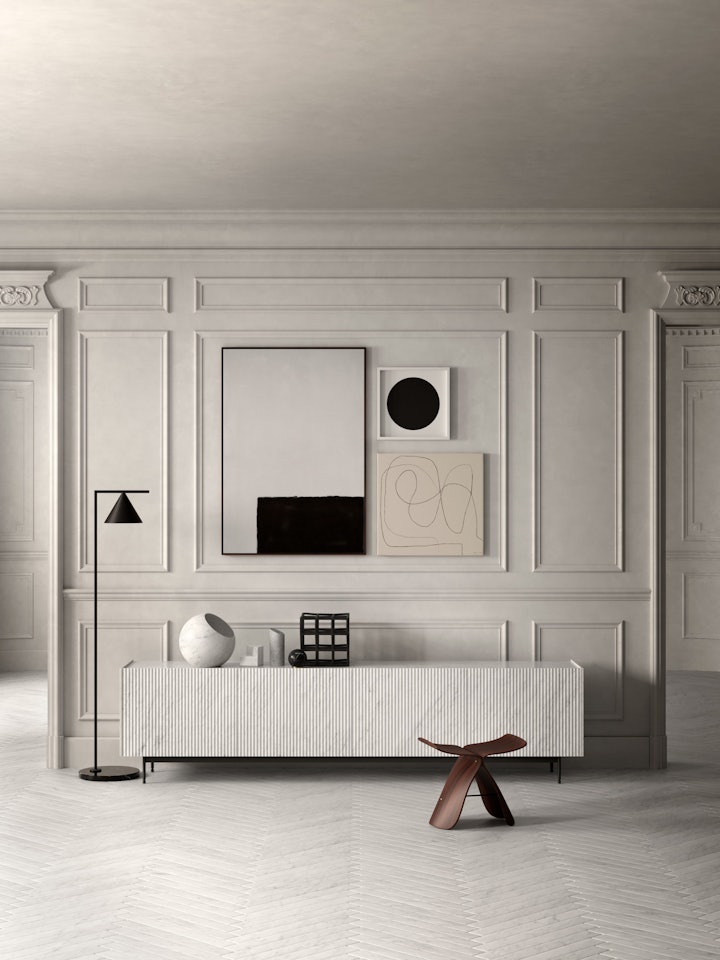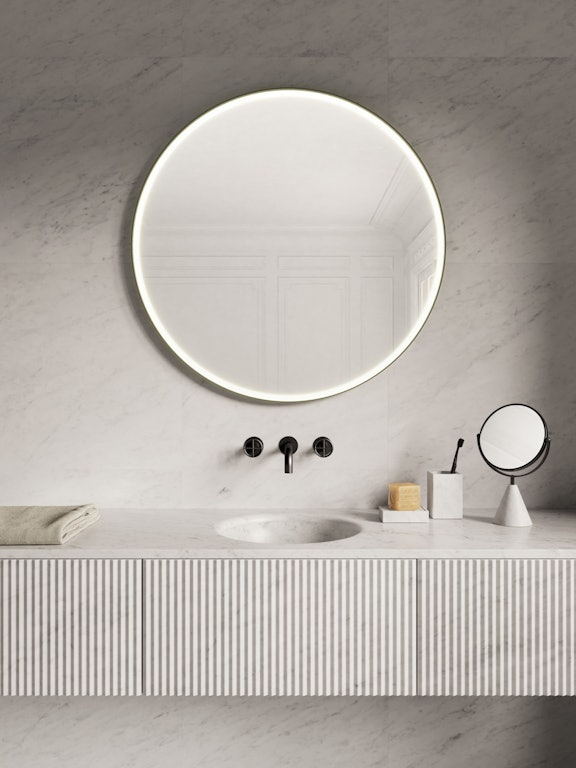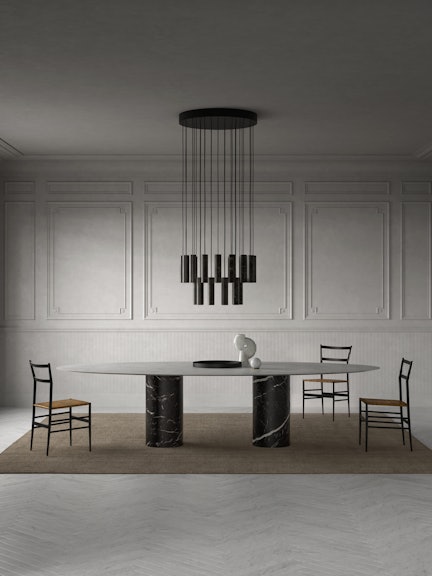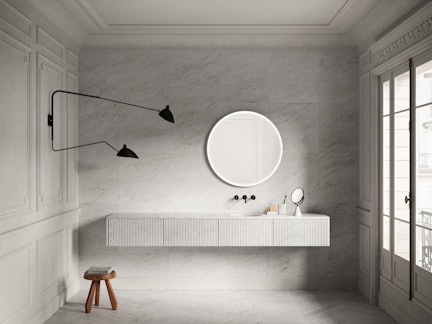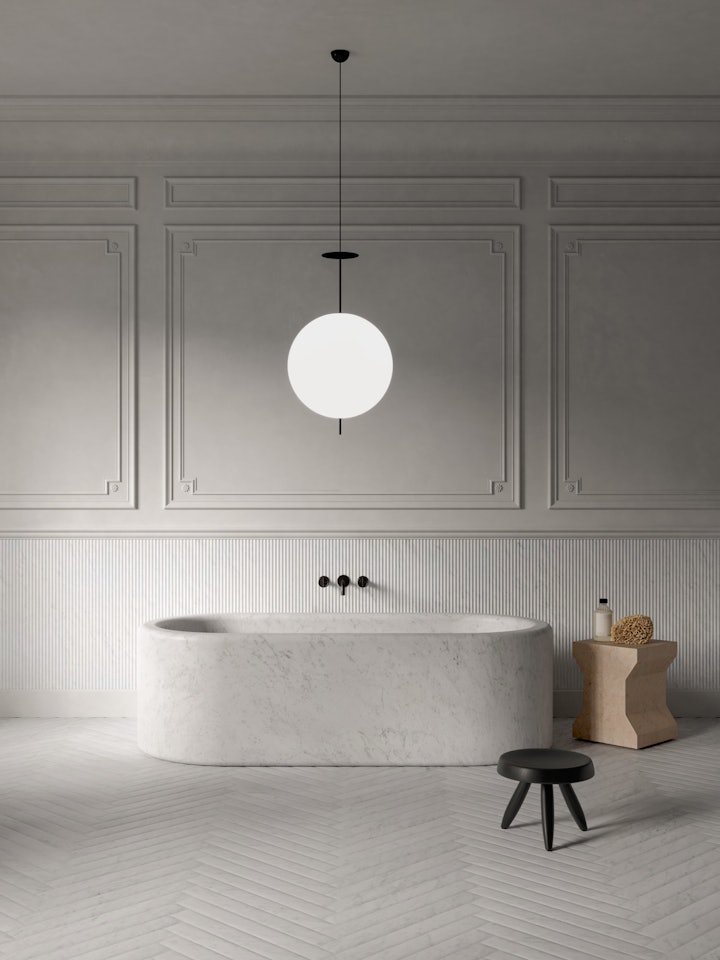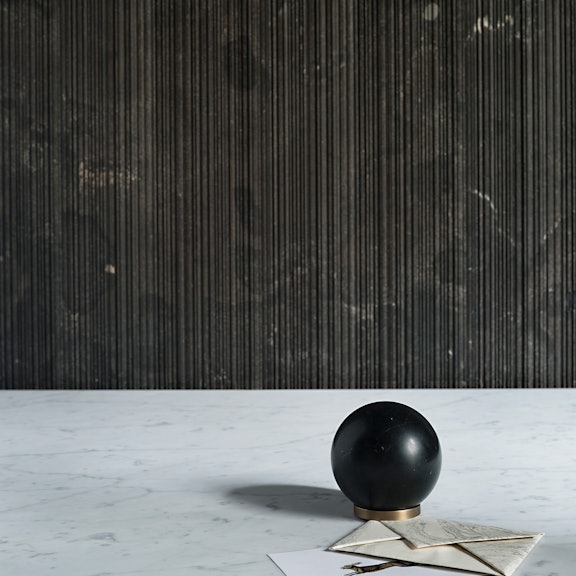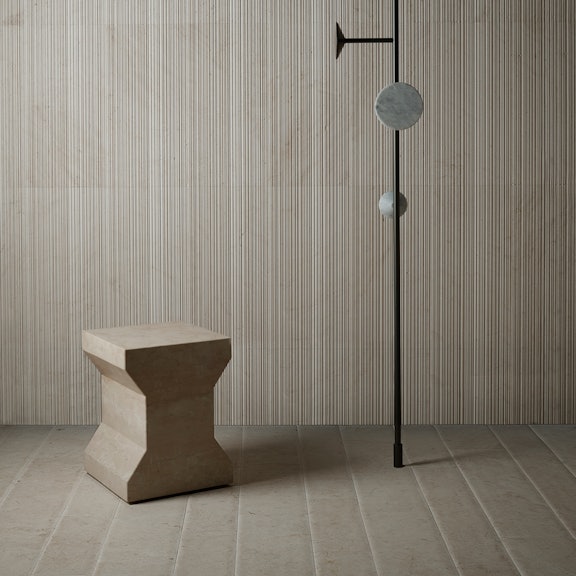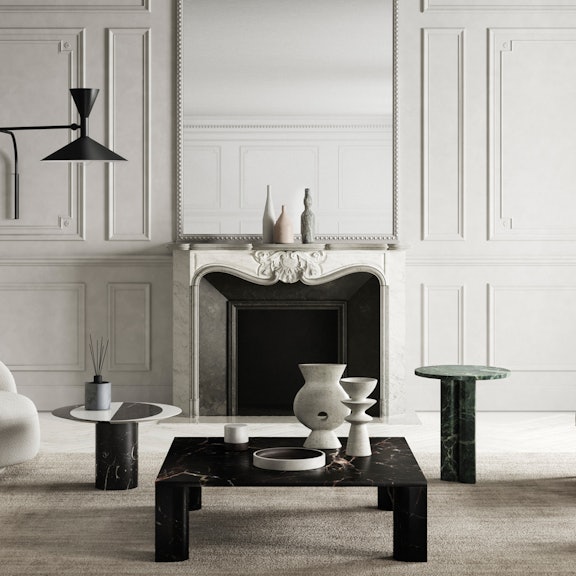Dreaming of Paris
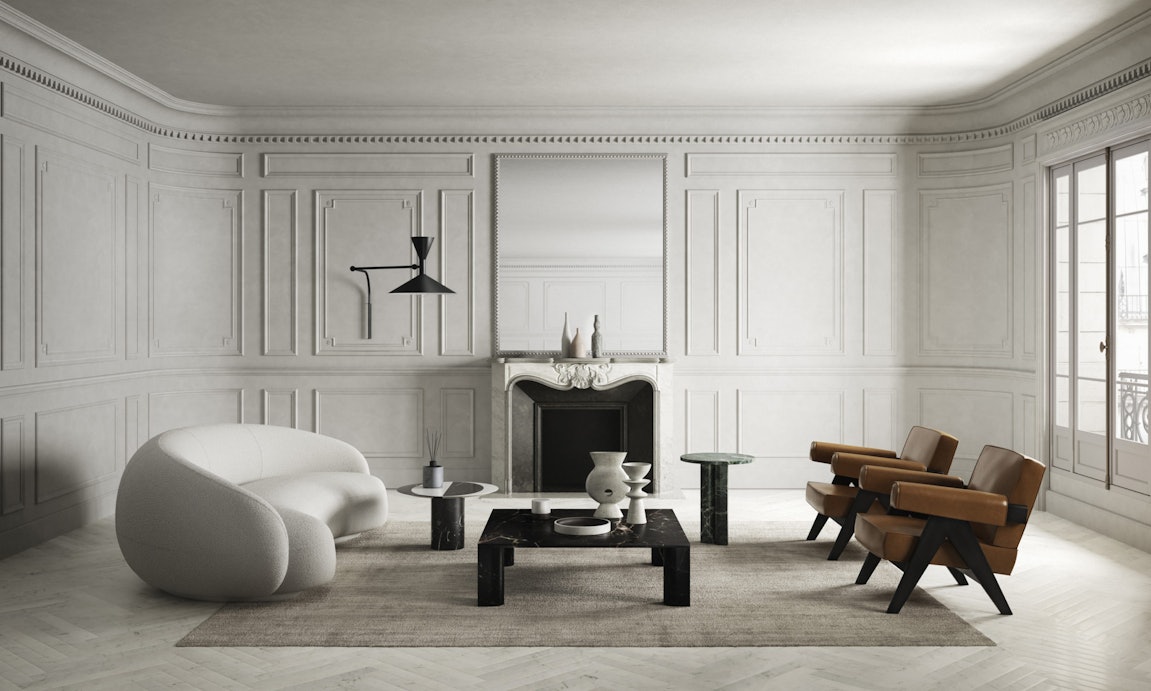
Paris has been known as the ‘City of Light’.
Paris has been known as the ‘City of Light’ since the mid-1600s. Under Louis XIV, an extensive network of street lighting was installed throughout the city in an effort to restore law and order, but La Ville-Lumière could just as well be named for its wide light-filled boulevards and stately Haussmanian buildings, faced in the distinctive, luminescent, Lutetian limestone.
Waking to this light as it filters into the Salvatori apartment in Montmartre, to the north of Paris, high above the city, is a peaceful way to begin a day emulating the city’s famous flâneurs – those who stroll slowly through the streets, taking in the sights. But a day walking through Paris needs careful preparation: a tartine and coffee at the Proiezioni dining table – beneath Silo chandelier, sculptural in dark Pietra d’Avola – and a bath. Carved by Salvatori’s master craftsmen from a solid block of Bianco Carrara marble, the Balnea bathtub plays with notions of tactility and weight; designer Elisa Ossino imbuing the stone with a calming presence by gently curving its hard surface to appear light and soft.
The Bois de Boulogne is reached after only a few minutes on the metro and represents a calm, natural oasis on the western edge of the city. Having walked south along the paths that snake through the woods and around the lake, there’s time to stop at the Villa La Roche, a house designed by Le Corbusier in the 1920s and which now houses a foundation dedicated to his work. Then it’s a short hop across the city to the Great Mosque for lunch – tagine, couscous and mint tea in an intimate courtyard.
The historic quarter of Le Marais lies just the other side of the Seine, and easily offers an afternoon’s worth of browsing through boutiques, vintage shops and small galleries. Having crossed the river at one of its most picturesque points – at the tip of the Île Saint-Louis and Île de la Cité, in the shadow of Notre-Dame – it’s a few minutes by foot to the Maison Européenne de la Photographie, a small museum that mounts excellent exhibitions of contemporary photography. And it’s always worth stopping by the Atelier Brâncuși, a faithful recreation of the great Romanian sculptor’s studio housed in an often-overlooked building by the Pompidou Centre.
It’s then time for a pastis in one of the many cafés, watching the crowds pass in the early evening, before heading to Chez Julien, a bistro set in a sensitively-restored Belle Époque interior for typical French fare. Following a coffee and cognac, the taxi home winds through the city, past the Louvre and back up the hill to Montmartre – from the living room illuminated with the soft light of Ossino’s Urano lamp, Paris can be seen, lit up far below.
There a last drink while listening to Chopin is the perfect way to end a day in the city, a moment complemented by the sculptural Omaggio a Morandi vases on the mantlepiece; the pieces from Vincent Van Duysen’s Lui&Lei collection arranged on the ‘Love me, Love me’ not coffee table, designed by Michael Anastassiades. All that remains is to get ready for bed before the vast, perfectly circular Mirari mirror in the peaceful surrounds of Ossino’s Balnea bathroom.

